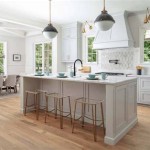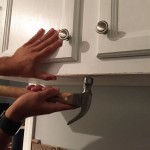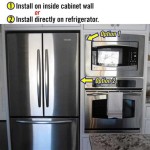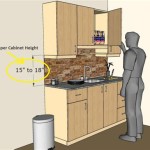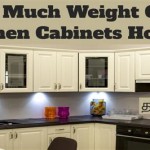Types of Kitchen Cabinets and Drawers: A Comprehensive Overview
Kitchen cabinets and drawers are fundamental elements of any kitchen design, serving both a functional and aesthetic purpose. The selection of appropriate cabinet and drawer types significantly impacts the efficiency of the kitchen workflow, storage capacity, and overall visual appeal. This article provides a comprehensive overview of the various types of kitchen cabinets and drawers, outlining their features, benefits, and typical applications.
Base Cabinets
Base cabinets, also known as lower cabinets, are the foundation of kitchen storage, sitting directly on the floor and supporting the countertop. They are typically 36 inches tall, including the countertop, and 24 inches deep, but variations exist depending on specific design requirements.
Standard Base Cabinets: These are the most common type of base cabinet, typically featuring one or two doors and one or more drawers. They are versatile and suitable for storing a wide range of kitchen items, including cookware, dishes, and pantry staples. Internal shelving is usually adjustable to accommodate different storage needs.
Drawer Base Cabinets: These cabinets consist entirely of drawers, offering efficient storage for utensils, cookware, and pantry items. The stacked drawer configuration maximizes vertical space and provides easy access to contents. Drawer dividers and organizers can further enhance the functionality of these cabinets.
Corner Base Cabinets: Corner cabinets are designed to maximize storage space in the corners of the kitchen, which are often underutilized. Several types of corner base cabinets exist, each with its own advantages and disadvantages.
Blind Corner Cabinets: These cabinets have a standard door opening, but extend back into the corner, creating a “blind” space. They often require special pull-out shelves or organizers to access the items stored in the back. The "blind" section can be right or left depending on the kitchen's layout.
Lazy Susan Corner Cabinets: These cabinets feature a rotating shelf or shelves, known as a lazy susan, that allows for easy access to items stored in the corner. Lazy susans can be full circle or pie-cut shaped to fit the cabinet's interior. They are effective for storing pots, pans, and other large items.
Pie-Cut Corner Cabinets: These cabinets have a diagonal front, creating a larger opening than traditional corner cabinets. They can be equipped with lazy susans or fixed shelves. Their shape makes accessing contents easier compared to blind corner cabinets, although they may occupy more footprint.
Sink Base Cabinets: These cabinets are designed specifically to accommodate the kitchen sink. They typically have a false front panel and an open interior to allow for plumbing connections. Sink base cabinets often include a tilt-out tray for storing sponges and scrub brushes.
Pull-Out Base Cabinets: These narrow cabinets feature pull-out shelves or racks, ideal for storing spices, oils, and vinegars. They are often placed next to the range or cooktop for easy access during cooking.
Wall Cabinets
Wall cabinets, also known as upper cabinets, are mounted on the wall above the countertop. They are typically 12 inches deep and vary in height, ranging from 30 inches to 42 inches. The height of wall cabinets is chosen based on ceiling height and desired storage capacity.
Standard Wall Cabinets: These cabinets feature one or two doors and adjustable shelves. They are used for storing dishes, glassware, and pantry items. They are the most common type of wall cabinets and provide versatile storage options.
Glass-Front Wall Cabinets: These cabinets have glass doors, allowing homeowners to display decorative items or showcase their dishware. They can have clear, frosted, or textured glass, depending on the desired level of privacy and aesthetic appeal.
Open Shelving: While not strictly cabinets, open shelving provides an alternative to traditional wall cabinets. They offer easy access to frequently used items and create a more open and airy feel in the kitchen. However, open shelves require more frequent cleaning and may not be suitable for storing all types of items.
Microwave Cabinets: These cabinets are specifically designed to house a microwave oven. They can be built-in or freestanding, and typically include an open shelf or cabinet below for storing cookbooks or microwave accessories.
Corner Wall Cabinets: These cabinets are designed to fit in the corners of the kitchen, maximizing storage space. They are typically angled or L-shaped and can have standard doors or bi-fold doors.
Wine Racks: Wall-mounted wine racks provide a stylish and functional storage solution for wine bottles. They can be integrated into a cabinet design or installed as a separate unit.
Tall Cabinets
Tall cabinets, also known as pantry cabinets or utility cabinets, extend from the floor to the ceiling, providing ample storage space. They are typically 24 inches deep and vary in width, depending on the specific application.
Pantry Cabinets: These cabinets are designed for storing pantry items such as canned goods, dry goods, and snacks. They often feature adjustable shelves, pull-out shelves, or door-mounted racks.
Linen Cabinets: While more common in bathrooms, linen cabinets can also be used in kitchens for storing linens, such as dish towels and tablecloths. They typically feature adjustable shelves and can be customized with drawers or baskets.
Utility Cabinets: These cabinets are used for storing cleaning supplies, brooms, and other household items. They often feature a tall, narrow design to accommodate long-handled tools.
Appliance Garages: These cabinets are designed to conceal small appliances, such as toasters and coffee makers, when not in use. They typically have a roll-up or swing-out door.
Drawer Types and Features
Drawers are an integral part of kitchen cabinet systems, providing organized and accessible storage for various items. Several types of drawers exist, each with its own features and benefits.
Standard Drawers: These are the most common type of drawer, typically used for storing utensils, cutlery, and small kitchen tools. They can be constructed from various materials, including wood, metal, and plastic.
Soft-Close Drawers: These drawers feature a mechanism that gently closes the drawer, preventing slamming and reducing noise. Soft-close hardware enhances the durability and lifespan of the drawer system.
Full-Extension Drawers: These drawers extend fully out of the cabinet, providing complete access to the contents. Full-extension slides are particularly useful for storing deep items or for individuals with limited mobility.
Dovetail Drawers: Dovetail drawers are constructed with interlocking dovetail joints, which provide superior strength and durability. Dovetail drawers are often considered a sign of quality craftsmanship.
Metal Drawers: Metal drawers are often used in modern kitchen designs. They are durable, easy to clean, and can be customized with various finishes and accessories.
Drawer Dividers and Organizers: Drawer dividers and organizers help to keep drawers neat and organized. They can be used to separate utensils, cutlery, cookware, and other items. Many different types of drawer dividers and organizers are available, including adjustable dividers, cutlery trays, and spice racks.
Pull-Out Shelves and Trays: These shelves and trays pull out from the cabinet, providing easy access to items stored in the back. They are particularly useful for storing pots, pans, and other heavy items.
Specialty Cabinets
Beyond the standard base, wall, and tall cabinet categories, several specialty cabinet types cater to specific needs and design preferences.
Island Cabinets: Kitchen islands often incorporate a combination of base cabinets, drawers, and open shelving to provide additional storage and workspace. Island cabinets can be customized to match the overall kitchen design and can include features such as a breakfast bar or a prep sink.
Beverage Centers: These areas integrate cabinets, wine refrigerators, and storage for glasses and bar accessories, creating a dedicated space for entertaining.
Desk Cabinets: In kitchens incorporating home offices, desk cabinets provide a dedicated workspace with storage for office supplies and equipment. They usually involve base cabinets configured to support a work surface and corresponding wall cabinets for additional storage.
Factors to Consider When Choosing Cabinets and Drawers
Selecting the appropriate types of kitchen cabinets and drawers involves considering several factors, including budget, design style, storage needs, and kitchen layout. Thoroughly assessing these factors will ensure that the chosen cabinets and drawers meet the specific requirements of the kitchen and enhance its functionality and aesthetic appeal.
Budget: The cost of kitchen cabinets and drawers can vary significantly, depending on the materials, construction, and features. Establishing a budget beforehand will help to narrow down the options and ensure that the chosen cabinets and drawers are affordable.
Design Style: The design style of the kitchen should be reflected in the choice of cabinets and drawers. For example, a traditional kitchen may feature raised-panel cabinets with decorative hardware, while a modern kitchen may feature slab-front cabinets with minimalist pulls.
Storage Needs: The amount of storage space required will influence the types of cabinets and drawers chosen. Carefully consider the items that need to be stored and select cabinets and drawers that can accommodate them efficiently.
Kitchen Layout: The layout of the kitchen will also influence the types of cabinets and drawers chosen. Corner cabinets are essential for maximizing storage space in corners, while pull-out cabinets are useful for narrow spaces.
Materials: Cabinet and drawer boxes are commonly constructed from plywood or particleboard, with solid wood doors and drawer fronts available at a higher price point. The choice of material impacts durability, resistance to moisture and overall aesthetic qualities.
Hardware: Hinges, drawer slides, and knobs or pulls are functional and decorative elements influencing the user experience and the kitchen's overall style. Quality hardware improves the longevity and operability of cabinets and drawers.

5 Types Of Kitchen Cabinet Drawers And 2 Drawer Fronts

Types Of Cabinets Every Kitchen Must Have Blog

11 Drawer Designs For An Efficient Kitchen

8 Cabinet Door And Drawer Types For An Exceptional Kitchen

The Diffe Types Of Cabinet Storage Solutions Collection

Types Of Kitchen Cabinets 101 Guide For Homeowners

9 Essential Kitchen Cabinet Types Fitzgerald Kitchens

8 Diffe Types Of Kitchen Cabinets You Ll Love

10 Types Of Kitchen Cabinets To Consider During A Remodel
:max_bytes(150000):strip_icc()/Drawers-Rompel-56a575be5f9b58b7d0dd081b.jpg?strip=all)
Kitchen Cabinet Design Essentials
Related Posts




